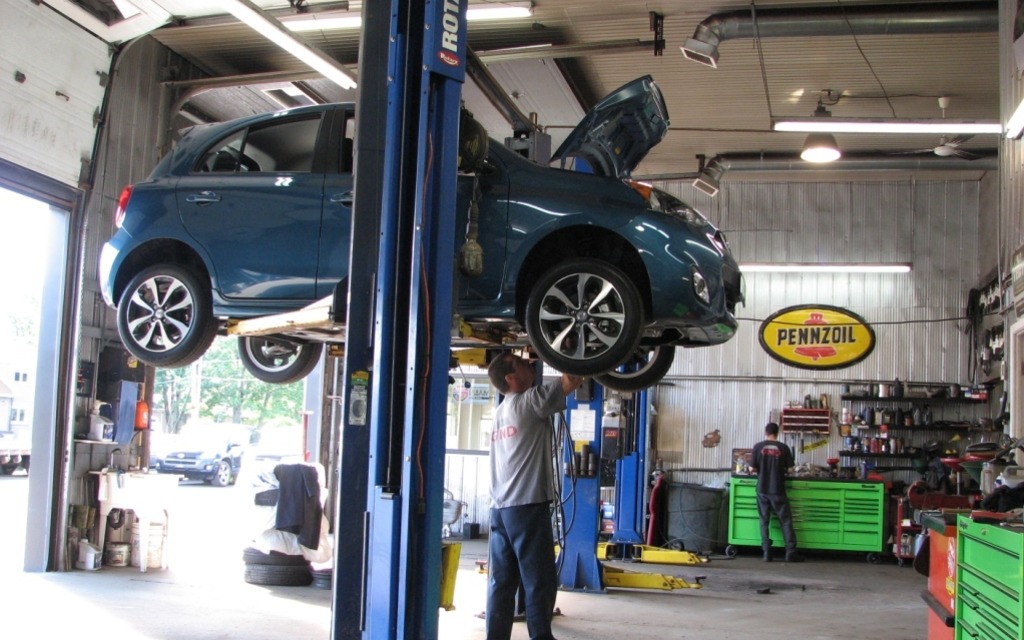The mini Micra goes to the Garage for its Entrance Exam
Nissan has resuscitated its little Micra this year and The Car Guide wanted to learn more about this blast from the past. To keep the starting price under $10,000, Nissan undoubtedly had to make some compromises, so we enlisted the help of the mechanics at Garage Nicolas Demers to examine this car’s mechanical design.
Although it’s considered a microcar, the Micra is large enough to house a traditional 1.6-litre four-cylinder engine, unlike the Mitsubishi Mirage, which has to settle for a 1.2-litre three-cylinder. However, all of the components orbiting the engine are small in size. The reservoirs for the windshield washer fluid and coolant along with the air intake and battery components don’t take up too much space and are still able to do the job. Obviously, selling a car for less than $10,000 means making some sacrifices. The cabin soundproofing and paint – both inside and out – were among the casualties in this instance. Nonetheless, the mechanical layout is simple and efficient. The absence of a large plastic engine cover proves that there was no room in this design for the nonessential. The mechanics who examined the car were surprised by the generous layer of rustproofing, which suggests that Nissan knows the metal used for this vehicle is of poor quality and is susceptible to premature rusting. Otherwise, there’s nothing special under this Micra’s hood.
The same can be said for the car’s undercarriage, where saving on manufacturing costs meant adopting a very minimalist approach. These days, most cars have plastic plates to protect the mechanical parts from debris and to improve air flow for better aerodynamics. The Micra has no such plates. Some of the elements of the chassis, including a beam that crosses the vehicle from left to right near the front wheels to make it more rigid, are made of thin, hollow metal, which will accumulate debris and calcium and lead to premature rust. The plastic side rails under the doors have the same problem, as ice and snow will cling to the openings and then rip off everything in their wake when detaching from the vehicle.
Most of the elements are solidly fastened but unprotected, in particular the cables and ducts that run under the floor from the front to the rear wheels and the fuel filler tube that passes too close to the rear wheel. The gas vapour vent module seems too big for the car, is poorly incorporated into the other elements and exposes many connectors to road debris. Comments also abound about the spare tire stored under the car (as with pick-up trucks), especially with regard to its mounting mechanism made up exclusively of metallic rods. Once rust attacks at the junction of two rods, the spare tire will be in a precarious position, so you’ll have to check it regularly to make sure that it’s still solidly attached. And if you’re the type to schlep your bike on a baggage rack, note that you can’t mount a trailer hitch, not even a small one, to the Micra’s chassis.
The little Micra was definitely not designed for our harsh winters. Its target market promises to be more global: the Micra will survive a lot longer in countries like China, Mexico or India. Here at home, rustproofing is a must if you plan on keeping the car for several years.












